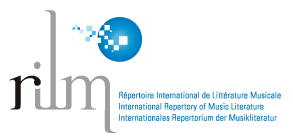Ginastera (1916–1983): La trayectoria de un método.
Palabras clave:
Alberto Ginastera, Segundo Cuarteto de Cuerdas, Op. 26 (1958), Alban Berg, Suite lírica (1926), Bearbeitung, sistemas analíticos, fuentesResumen
En rasgos generales, la poética musical de Alberto Ginastera (1916–1983) reúne los procedimientos compositivos de mayor proyección en el siglo XX, que a su vez sirvieron para desarrollar sistemas analíticos basados en estudios de compositores canónicos. La interpenetración laberíntica que emerge del proceso de transferir y recomponer elementos de una obra a otra, inherente a la trayectoria de su método, puede involucrar un elemento generativo tomado de una obra anterior, o toda una enunciación reelaborada como metamorfosis, creando una densa trama de relaciones intratextuales proyectadas a diferentes niveles de sus propios textos, que a su vez convierte cada presentación en una “obra en progreso”. A partir del Segundo Cuarteto de Cuerdas, Op. 26 (1958), sus propiedades estructurales, su criptografía y su relación dialógica con obras paradigmáticas del género, y también de su arreglo o Bearbeitung como Concerto per corde, Op. 33 (1965), se expanden coordenadas interpretativas dirigidas a descifrar la vasta red intratextual que, atravesando su trayectoria compositiva, verifica la congruencia entre su poética y los sistemas de construcción musical que definieron la modernidad en el siglo XX.
Descargas
Descargas
Publicado
Número
Sección
Licencia
Derechos de autor 2018 Malena Kuss

Esta obra está bajo una licencia internacional Creative Commons Atribución-NoComercial 4.0.
Atribución/Reconocimiento-NoComercial 4.0 Internacional
https://creativecommons.org/licenses/by-nc/4.0/
Usted es libre de:
- Compartir — copiar y redistribuir el material en cualquier medio o formato.
- Adaptar — remezclar, transformar y construir a partir del material.
- La licenciante no puede revocar estas libertades en tanto usted siga los términos de la licencia
Bajo los siguientes términos:
- Atribución — Usted debe dar crédito de manera adecuada, brindar un enlace a la licencia, e indicar si se han realizado cambios. Puede hacerlo en cualquier forma razonable, pero no de forma tal que sugiera que usted o su uso tienen el apoyo de la licenciante.
- No Comercial — Usted no puede hacer uso del material con propósitos comerciales.
- No hay restricciones adicionales — No puede aplicar términos legales ni medidas tecnológicas que restrinjan legalmente a otras a hacer cualquier uso permitido por la licencia.
Avisos:
No tiene que cumplir con la licencia para elementos del material en el dominio público o cuando su uso esté permitido por una excepción o limitación aplicable.
No se dan garantías. La licencia podría no darle todos los permisos que necesita para el uso que tenga previsto. Por ejemplo, otros derechos como publicidad, privacidad, o derechos morales pueden limitar la forma en que utilice el material.






